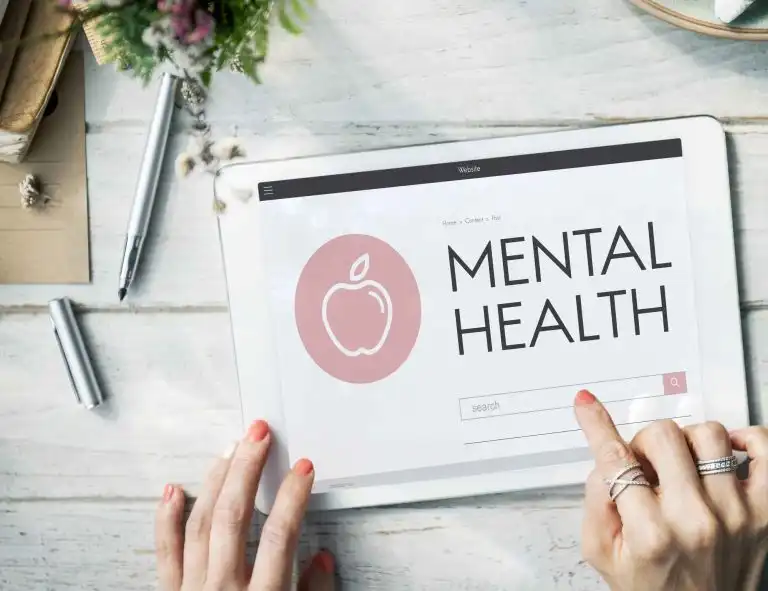Imagine sitting down to finish a simple task, but your brain feels like a web browser with 50 tabs open, some playing music, others refreshing at random, and a few just… frozen. That’s what life can feel like for many neurodivergent individuals.
But what exactly is neurodivergence? It’s a broad term that includes conditions like ADHD, autism, dyslexia, and more, essentially, brains that function in ways different from the so-called “typical” mind. And while neurodivergence often comes with incredible strengths, like creativity, deep focus (when interested), or unique problem-solving skills, it can also bring some real challenges.
Struggling with staying organized? You’re not alone. Feeling overwhelmed by sensory overload? Many can relate. Finding it hard to regulate emotions or stay productive? Yep, those are common struggles too.
Thankfully, there are tools, strategies, and simple tweaks that can make daily life easier. Whether it’s using the right apps, adjusting your environment, or learning new coping techniques, small changes can lead to big relief.
In this Q&A, we’ll tackle some of the most common questions about tools for neurodivergence, sharing practical tips and strategies to help make life feel a little less like a chaotic browser window, and a little more like a space where you can thrive.
What Are Some Helpful Tools for Focus and Productivity?
If you’ve ever sat down to work, only to realize an hour later that you’ve been deep-diving into random Wikipedia pages (or watching cat videos), you’re not alone. For neurodivergent individuals, focus isn’t just about “trying harder”—it’s about using the right tools to work with your brain, not against it. Here are some game-changers:
Time Management Apps – Your Brain’s Personal Assistant
Think of apps like Trello, Notion, or Pomodoro timers as your friendly sidekicks in the battle against distractions.
- Trello helps you visually organize tasks like a giant digital to-do list.
- Notion is like a Swiss Army knife for organization—perfect for planning, note-taking, and structuring your workflow.
- Pomodoro timers work like magic by breaking work into focused 25-minute sprints with short breaks (because your brain deserves it).
Pro tip: Pair a Pomodoro timer with a reward system—finish a work sprint, then treat yourself to a coffee or a quick dance break.
Noise-Canceling Headphones – Escape the Chaos
Ever tried working in a coffee shop only to get distracted by the sound of someone stirring their drink way too aggressively? Sensory overload can be a real struggle, and that’s where noise-canceling headphones come in. They help block out background noise so you can focus without feeling like your brain is juggling ten different conversations at once.
Pro tip: If total silence feels eerie, try playing brown noise or instrumental music. It keeps your brain engaged just enough without being distracting.
Task Breakdown Techniques – Because Big Tasks Can Feel Like Climbing Everest
Looking at a massive project can feel overwhelming, like staring at a mountain without a map. Breaking tasks into bite-sized pieces makes them easier to tackle.
- Use checklists (physically checking things off feels weirdly satisfying).
- Try apps like Todoist or Google Keep for simple task tracking.
- Set micro-goals—instead of “Write a report,” break it into smaller steps like “Outline the intro” or “Gather research.”
Pro tip: Celebrate small wins! Even tiny progress is still progress.
Looking for more ways to stay on track? Check out our guide for setting realistic goals to make productivity feel less like a struggle and more like a win.
How Can I Manage Sensory Overload?
Ever walked into a grocery store and felt like the fluorescent lights were too bright, the beeping cash registers too loud, and the chatter around you too overwhelming—all at once? That’s sensory overload, and for many neurodivergent individuals, it can turn everyday situations into exhausting experiences. Here are some ways to create a sensory-friendly space and regain a sense of control.
Sensory-Friendly Environments – Build Your Own Calm Zone
Imagine stepping into a space where everything feels just right. Whether it’s your bedroom, workspace, or a quiet corner in your home, setting up a sensory-friendly environment can make a huge difference.
- Dim the lights – Harsh lighting can be overstimulating, so consider warm bulbs, LED dimmers, or blackout curtains.
- Weighted blankets – The gentle pressure can feel like a comforting hug, helping to ease stress and promote relaxation.
- Fidget tools – Stress balls, textured keychains, or even a smooth rock in your pocket can provide a grounding touch when you feel overwhelmed.
If you’re in a public place and sensory overload starts creeping in, small adjustments can help. Wearing sunglasses indoors, using noise-canceling earbuds, or carrying a familiar textured item can make an environment feel less overwhelming.
Apps for Sound Regulation – Control the Noise Around You
Sometimes, escaping a loud environment isn’t possible, but you can change what you hear.
- White noise apps (like Noisli or myNoise) create steady background sounds to mask unpredictable noises.
- Nature sounds (rainfall, ocean waves, rustling leaves) can be soothing and help block out distractions.
- Pink or brown noise (lower-frequency background sounds) can be less harsh than traditional white noise and easier on sensitive ears.
If you’re in a crowded place and feeling overstimulated, playing calming sounds through one earbud while leaving the other ear open for awareness can help filter distractions without completely tuning out.
Mindfulness Techniques – A Mental Reset Button
When sensory overload hits, grounding yourself can bring immediate relief. Simple mindfulness techniques can make a big difference:
- Box breathing – Inhale for four seconds, hold for four, exhale for four, and hold for four. This rhythmic breathing pattern helps regulate stress responses.
- 5-4-3-2-1 technique – Identify five things you see, four things you touch, three things you hear, two things you smell, and one thing you taste. This method helps bring focus back to the present moment.
- Guided meditations – Apps like Headspace or Calm offer short, structured meditations designed for sensory regulation.
If deep breathing or meditation doesn’t feel right for you, consider using cold water as a grounding technique, splash your face, hold an ice cube, or sip a chilled drink. Engaging your senses in a controlled way can help counteract overstimulation.
Managing sensory overload isn’t about avoiding the world. It’s about finding tools and techniques that help you navigate it more comfortably. Small changes in your environment and daily habits can make a big difference in creating a sense of balance.
Are There Tools to Help with Emotional Regulation?
Emotions can sometimes feel like an unpredictable rollercoaster—one moment everything is fine, and the next, frustration, anxiety, or sadness seem to take over. For neurodivergent individuals, emotional regulation can be especially challenging, but the right tools can provide structure and support.
Mood-Tracking Apps – Recognizing Patterns
Have you ever looked back at your week and realized you had more bad days than good ones, but you’re not sure why? That’s where mood-tracking apps like Daylio or Moodfit can help. By logging your mood each day, along with notes on sleep, diet, and stress levels, you can start spotting patterns—maybe certain times of the day, specific tasks, or even foods affect how you feel.
Some apps also offer reminders for self-care, such as taking breaks, drinking water, or practicing gratitude. Over time, this kind of tracking can help you identify emotional triggers and develop strategies to manage them.
CBT with PsychPlus – Personalized Support for Emotional Well-Being
While CBT apps like Woebot and Sanvello offer helpful tools, there’s no substitute for personalized support from a trained professional. Cognitive Behavioral Therapy (CBT) is a powerful approach for managing emotional challenges and reshaping negative thought patterns—but working with a therapist can provide the customized care and guidance that apps simply can’t match.
At PsychPlus, we offer CBT sessions that allow you to work with a licensed therapist from the comfort of your home. Whether you’re dealing with anxiety, depression, or everyday stress, CBT can help you:
- Reframe negative thoughts that lead to emotional spirals.
- Develop healthier coping strategies to manage challenges.
- Build emotional resilience and regain a sense of control over your reactions.
Our virtual appointments make it easy to receive the support you need on your schedule, without the hassle of in-person visits. So, if you’re looking for personalized guidance to help you manage your emotions more effectively, PsychPlus is here to support you every step of the way.
Ready to start? Book an appointment today and begin your journey to emotional balance.
Physical Movement – A Reset for the Mind
Sometimes, emotions can feel overwhelming in a way that thinking alone can’t fix. Physical movement—whether it’s stretching, yoga, or even a short walk outside—can help regulate emotions by releasing pent-up energy and tension.
For example, if frustration is building up, shaking out your hands, rolling your shoulders, or doing some deep squats can signal to your brain that it’s time to shift gears. If anxiety is creeping in, slow, intentional movements like deep stretches or paced breathing can provide a sense of calm.
For more strategies on regulating dopamine levels and managing focus, check out our guide to taking a Dopamine Detox.
What Can Help with Communication and Social Interactions?
Social interactions can sometimes feel like an unpredictable maze—whether it’s struggling to find the right words, misreading tone, or feeling exhausted after conversations. But with the right tools, navigating social situations can become a little easier.
Text-Based Support – Writing with Clarity
For those who find verbal communication tricky, written communication can be a great alternative. But sometimes, getting the right tone or wording takes extra effort. Apps like Grammarly or TextExpander can help make messages clearer and more effective, whether it’s writing an email, crafting a text, or preparing a social media post.
These tools can:
- Check for tone – Making sure your message sounds friendly and professional.
- Suggest alternative phrasing – Helping avoid misinterpretations.
- Save common responses – With TextExpander, you can create shortcuts for frequently used messages.
If social interactions feel overwhelming, leaning on text-based communication when possible can take the pressure off real-time conversations.
Scripts and Prompts – Having Go-To Responses
Ever found yourself completely blanking in a conversation or replaying what you should have said hours later? Having pre-written scripts for common situations—whether it’s small talk, setting boundaries, or responding to invitations—can make social interactions less stressful.
Some examples of useful scripts include:
- For declining invitations: “That sounds great, but I need some downtime today. Let’s plan another time.” For more information and tips, check out our blog: How to Gracefully Accept a Party Invitation – Or Not?
- For setting boundaries: “I appreciate your input, but I need to process this in my own way.”
- For handling small talk: “I’m not great at small talk, but I’d love to hear about your latest project.”
Scripts don’t have to be robotic—they’re just a way to give yourself a starting point so you don’t feel stuck in the moment.
Social Skills Apps – Practicing in a Low-Pressure Way
If real-life social interactions feel overwhelming, social skills apps like Peppy Pals or Replika can provide a safe space to practice. These apps offer:
- Conversational AI to practice responding to different social scenarios.
- Role-playing exercises to help build confidence in interactions.
- Story-based learning to explore social cues and emotional intelligence.
Practicing social interaction in a stress-free environment can make real-life conversations feel more manageable over time.
Communication doesn’t have to be a struggle—with the right tools and strategies, it can become a skill that works with your strengths rather than against them.
When Should I Seek Professional Help?
While self-help tools can be incredibly useful, there are times when extra support is needed. If struggles with focus, organization, or emotional regulation start interfering with daily life—whether it’s affecting work, relationships, or personal well-being—it may be time to seek professional guidance.
Some signs that professional support might be helpful include:
- Feeling overwhelmed despite trying different strategies.
- Experiencing emotional highs and lows that feel unmanageable.
- Having trouble maintaining relationships or daily responsibilities.
You don’t have to figure everything out on your own. A mental health specialist can provide tailored strategies, therapy options, or even medication if needed.
Take the next step: Schedule a session with a specialist at PsychPlus.
Conclusion
Neurodivergence isn’t just about challenges—it also comes with unique strengths. Whether it’s creativity, deep focus, or thinking outside the box, neurodivergent individuals bring incredible value to the world. But when struggles with organization, emotions, or communication become overwhelming, the right tools can make a significant difference.
There’s no one-size-fits-all solution, so experiment with different strategies and find what works best for you. And if self-help tools aren’t enough, seeking support is a sign of strength, not weakness.
Want to explore more mental health insights? Visit the PsychPlus blog page for additional resources.
Need expert guidance? Book an appointment with a qualified provider today.





